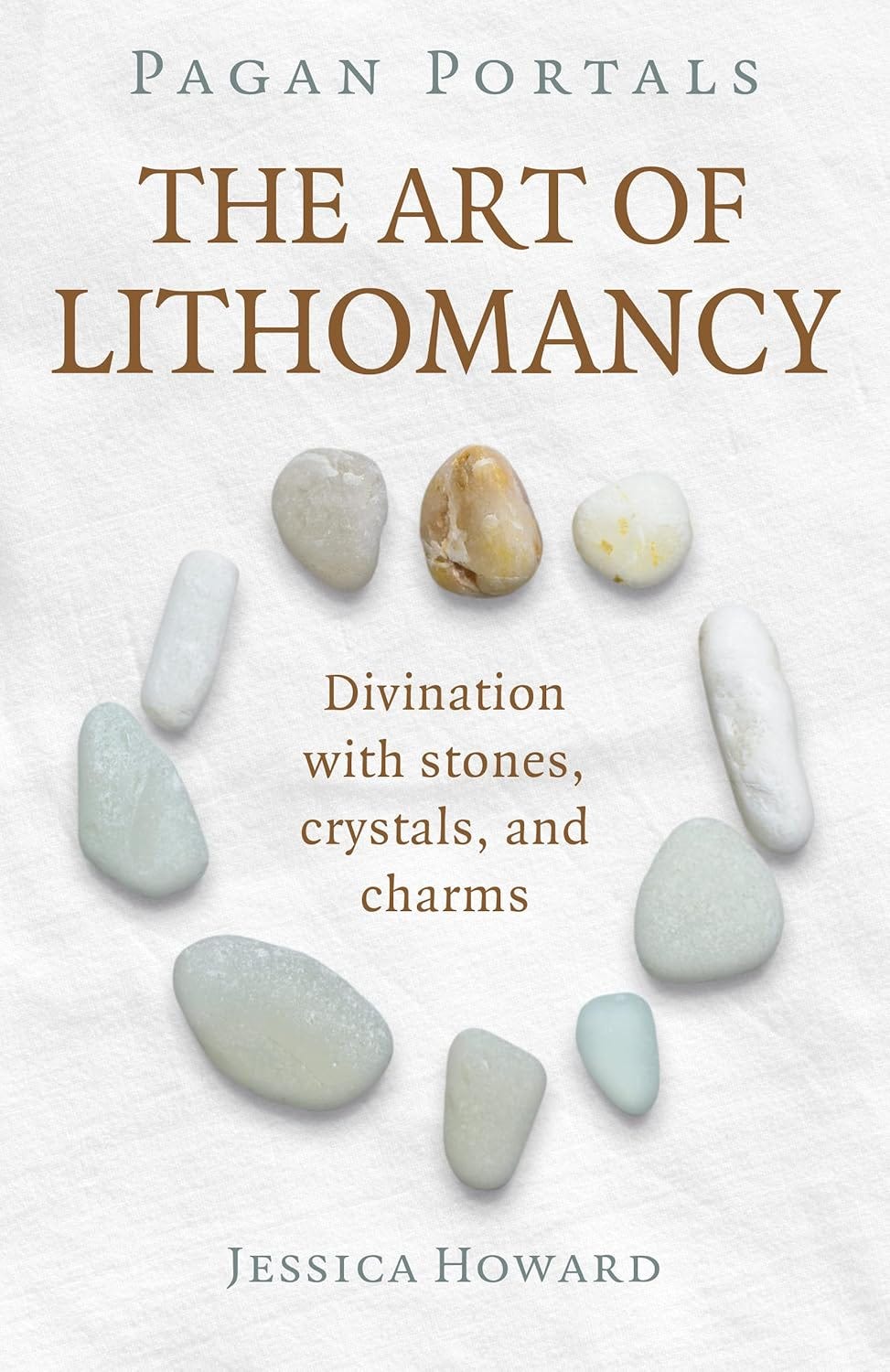Brigantia: Warrior Goddess
Written by Pauline Breen
Published by Moon Books, August 1, 2025
https://www.collectiveinkbooks.com/moon-books/our-books/pagan-portals-brigantia
Reviewed by Katrina Rasbold
In this addition to the Pagan Portal series, Pauline Breen, author of This is Brigid and Maman Brigitte, turns her attention to Brigantia, the Celtic warrior-mother deity revered in Northern Britain during Roman rule. This book is scholarly yet accessible, blending historical, mythological, and spiritual perspectives.
Breen draws on Roman inscriptions and linguistic analyses to reconstruct Brigantia’s historical footprint and her resonance within both Celtic and Roman cultures. The book emphasizes Brigantia not just as a maternal figure but as a warrior goddess, echoing the socio-political realities of her worship during Roman occupation.
True to the Pagan Portals line, the book offers practical rituals, devotional exercises, and suggestions for offerings, all well-suited to foster a living connection with Brigantia in modern spiritual life.
The author’s passion for Brigid/Brigantia is both palpable and articulate, making the material engaging for both casual readers and spiritual practitioners. It is easy to become as captivated with this warrior goddess as Breen is.
The use of epigraphic evidence and linguistic comparison lends academic credibility while keeping the information and presentation approachable. By spotlighting Brigantia’s martial aspects, the book expands the Brigidian mythos in a compelling new direction. The ritual guides and devotional prompts included make the material immediately usable for worship, meditation, or study.
Brigantia: Warrior Goddess is ideal for Pagans, Heathens, and eclectic neo-spiritual seekers curious about warrior goddesses, as well as anyone drawn to the intersecting identities of Brigid/Brigantia in both historical and devotional contexts.
This book succeeds as a sharp, spirited exposure of a lesser-known dimension of Brigid: the warrior-mother of Northern Britain. It is academic enough to inform, yet abundantly practical and heartfelt for spiritual application. Readers seeking an evocative primer paired with ritual tools will find it rich and rewarding. I highly recommend Brigantia as a strong addition to any Pagan library or to anyone drawn to goddess spirituality.
Nine’s a Charm by Martha Gray
Publisher: Moon Books (Collective Ink)
https://www.collectiveinkbooks.com/moon-books/our-books/pagan-portals-nines-charm
Reviewed by Katrina Rasbold
As part of the prolific series from Moon Books called Pagan Portals, this book is scheduled for release in early August in the United States.
Its focus of this book is on the “Nine Herbs Charm”—a powerful Old English healing spell, rooted in a 10th-century Galdr poem—and it deftly and unpacks the lore around the nine plants it features.
Each of the nine plants is examined across multiple dimensions including:
· Anglo‑Saxon and Norse historical records
· Archaeological and folklore insights
· Mythic and deity connections
· Medicinal and contemporary herbal usage
The book includes a lovely, extensive forward by mystic and occultist, Shani Oates, providing deeper historical context and clarifying ambiguous or lost charm phrases.
Gray comes across as authoritative, yet accessible in her writing and aptly balances scholarly rigor with clear, engaging prose. The depth of her training shows through the author’s detailed, knowledgeable exploration of both magical and medicinal aspects of the herbs. She even offers gardening tips and recipes using the nine herbs.
By blending information on the botanical properties of each herb, the folklore, magic, and cookbook-style recipes, Gray brings each plant to life. Tied to archaeological and mythological sources, the historical consciousness of the material is a prominent feature of the book. This provides authenticity and a rich narrative that is a joy to read.
Nine’s a Charm is a nicely textured, multi-layered exploration of the Nine Herbs Charm through the lenses of botany, folklore, magic, and history. Ideal for readers interested in herbalism, Anglo-Saxon culture, and folk magic, it’s a fine addition to any Pagan, herbalist, or historical spirituality collection.
The Art of Lithomancy by Jessica Howard
Published by Moon Books
https://www.collectiveinkbooks.com/moon-books/our-books/pagan-portals-art-lithomancy
Reviewed By Katrina Rasbold
An operative feature of the Pagan Portals series put out by Moon Books is its brevity and this book is no exception. Jessica Howard’s concise 104‑page guide demystifies lithomancy—the art of divination using stones, crystals, charms, or even shells. The book is well structured structured to gradually lead beginners from foundational concepts into some advanced practices, making it accessible yet substantiative.
Howard starts by defining lithomancy and contextualizing it within broader divination traditions. She emphasizes its intuitive and creative nature, describing it as an art rather than a rigid system.
Chapters dedicated to choosing, cleansing, charging, and storing stones provide step‑by‑step guidance. The inclusiveness is refreshing, suggesting that readers can use garden pebbles or ethically sourced crystals. One could financially invest as much or as little as they choose into this process and still achieve excellent results by following Howard’s instructions.
The book offers multiple layouts—from simple yes/no tosses to segmented circles (past‑present‑future, months, astrological houses). The author then explains how to read patterns, spatial relationships, symbols, and even stone orientation.
One of the book’s highlights is a practical guide to combining lithomancy with energy healing. Using chakra-aligned stones plus elemental and personal markers, readers learn to diagnose energetic balance and blockages. This is a technique I have used in my own healing practice for decades and I am happy to see such an excellent explanation of its use.
A helpful appendix provides keyword associations (planets, chakras, elements), making it easy to develop and personalize your stone reading system. Howard provides structured guidance but leaves space for personal adaptation and intuition, allowing the reader to customize their stone usage to their own strengths and interests. The chakra set and astrological correspondence examples are especially useful for practitioners looking to integrate lithomancy into broader spiritual work.
The author’s tone invites and supports experimentation. The reader will not feel locked into a fixed system but rather able to grow into their own practice.
The Art of Lithomancy is beginner friendly, but experienced diviners will also likely find excellent new ideas to incorporate into their growing practice. This book is a welcoming, practical, and inspiring springboard for intuitive exploration.







